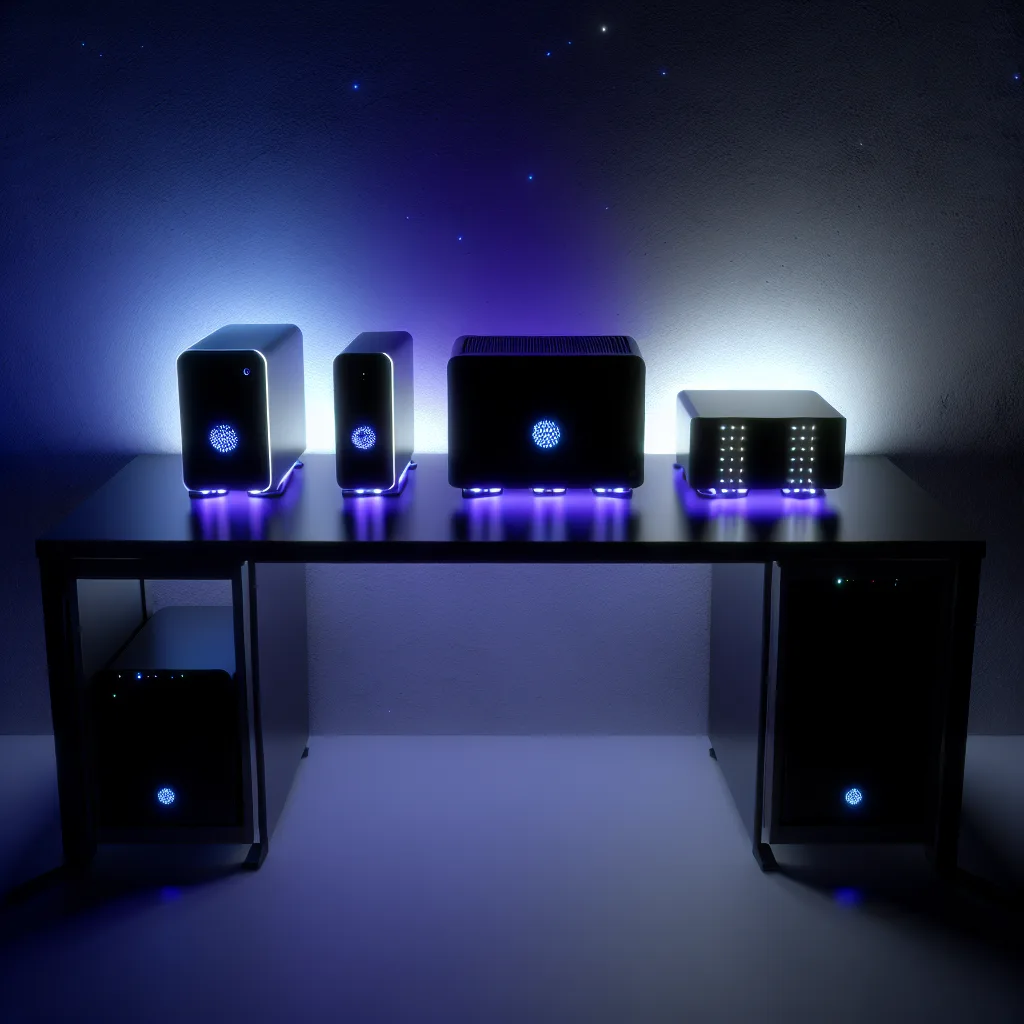From Gaming to Cybersecurity: A Deep Dive into My Personal Home Lab Setup.
It’s funny how a passion project can grow. What started as a simple desire to learn more about networking and servers has slowly evolved into the command center of my digital life. If you’ve ever been curious about what a modern, compact, and powerful home lab setup looks like in 2025, you’ve come to the right place. I thought it would be fun to pull back the curtain on my current rig, breaking down the hardware I use and what each piece of the puzzle actually does.
My goal was to build something powerful but also energy-efficient and quiet. That’s why I’ve fallen in love with mini-PCs. They’re small, they sip power, but they pack a serious punch. Let’s dive in.
The Brains: My Proxmox Virtualization Server
Every good home lab setup needs a core, and mine is a Lenovo ThinkCentre M70q mini-PC. This tiny machine is the undisputed heavyweight champion of my network.
- Model: Lenovo ThinkCentre M70q
- CPU: Intel Core i5-10400T
- RAM: 64GB G.SKILL DDR4
- Storage: 1TB Samsung 970 EVO NVMe SSD
I run Proxmox on this machine, which is an open-source virtualization platform. Think of it like a digital apartment building. Instead of having one computer run one operating system, Proxmox lets me run many “virtual” computers (VMs) all on this single piece of hardware. It’s incredibly efficient.
Right now, it’s dedicated to my cybersecurity practice lab. I’m running Ludus and GOAD (Game of Active Directory) environments to sharpen my skills in a safe, sandboxed space. Because this machine has so much RAM, I have plenty of room to spin up new VMs whenever I get a new idea or want to test something out without messing up my main systems.
Fun and Games: The Dedicated Game Server
While I could run game servers on my Proxmox machine, I like to keep things separate. For hosting games for a small group of friends, I have a dedicated HP ProDesk 600 G3 Mini.
- Model: HP ProDesk 600 G3 Mini
- CPU: Intel Core i5-7500T
- RAM: 32GB Corsair DDR4
- Storage: 500GB Samsung EVO NVMe SSD
This one runs Ubuntu Server, a lightweight and super stable version of Linux. It’s perfect for hosting game worlds for titles like Valheim or Minecraft. It just runs in the background, doing its job without any fuss.
So, how do my friends connect to it securely? That’s where Tailscale comes in. It creates a secure private network over the internet, so my friends can easily access the game servers as if they were on my local network, but without me having to expose my home IP address to the world. It’s incredibly easy to set up and works like magic.
My Synology NAS: The Ultimate Filing Cabinet
A proper home lab setup isn’t complete without a solid storage and backup solution. For this, I rely on a Synology DS220+ NAS (Network Attached Storage).
- Model: Synology DS220+
- RAM: 2GB (stock)
- Storage: 2x 4TB Seagate IronWolf NAS Hard Drives
You might look at the 2GB of RAM and think it’s underpowered, but for what it does, it’s perfect. This little box is the unsung hero of my network, handling several critical jobs 24/7:
- Plex Server: It stores all my movies and TV shows and streams them to any of my devices, wherever I am.
- Pi-hole: It blocks ads across my entire home network. No more annoying pop-ups or trackers.
- Nextcloud: This is my personal Google Drive. It gives me a private cloud for my files, photos, and documents, all hosted right here at home.
- Backups: Most importantly, it automatically backs up all the important data from my family’s computers.
The Mobile Command Center
Finally, there’s my personal laptop: a Lenovo Thinkpad T480. It’s a classic for a reason—rock-solid, reliable, with a fantastic keyboard. I run Kali Linux on it, which is a specialized operating system for cybersecurity and penetration testing. It’s the perfect tool for when I’m on the go and want to connect back to my lab or do some security research.
Putting It All Together
And that’s the tour! This home lab setup gives me a powerful platform for learning, a reliable server for gaming with friends, and a private, secure way to manage my own data. It’s a project that’s always evolving, but for now, I’m thrilled with how this compact and efficient system performs. If you’re thinking of starting your own lab, remember you can start small—even an old laptop or a Raspberry Pi can be the beginning of an amazing journey.
